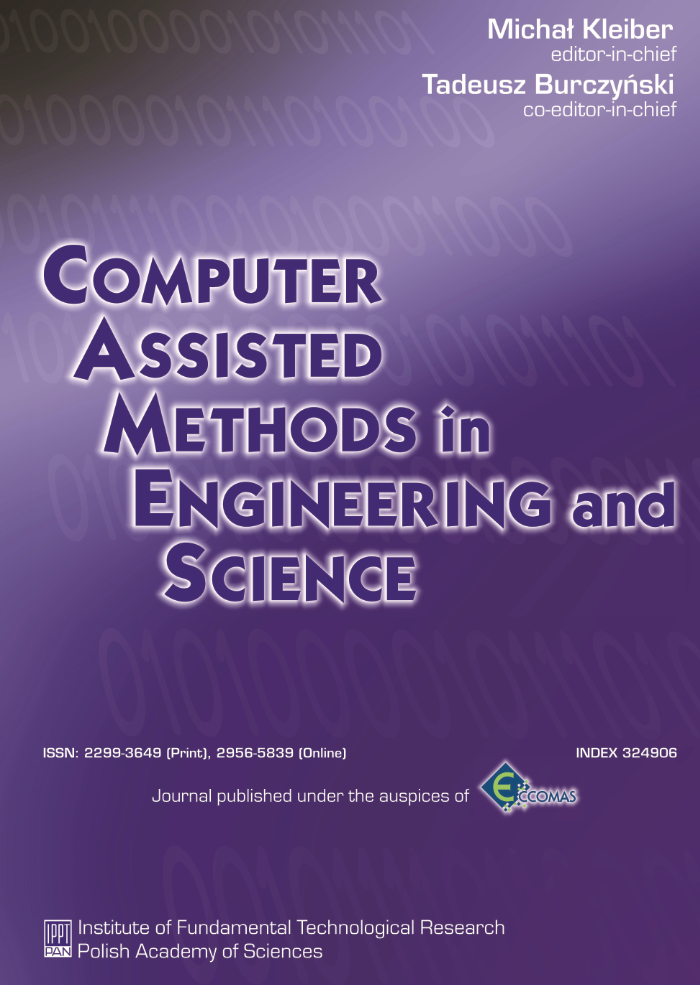Abstract
Graph theory has many applications in structural mechanics and there are also numerous topological transformations which make the related problems simpler. The skeleton graph and natural associate graph of finite element models are among such transformations. These transformations can efficiently be used for nodal and element ordering of regular finite element models. Natural associate graph and its mesh basis play a key role in optimal finite element analysis by combinatorial force method. In this paper, an efficient method is presented for generation of skeleton graph, natural associate graph as well as their mesh bases for finite elements models, using graph and digraph products.
Keywords:
finite elements, graph products, digraph products, associate graph, mesh basesReferences
[2] E. Cuthill, J. McKee. Reducing the bandwidth of sparse symmetric matrices. In: Proc. 24th Nat. Conf., 157–172, ACM, New York, 1969.
[3] A. Kaveh. Application of topology and matroid theory to the analysis of structures. PhD thesis. London University, Imperial College, March 1974.
[4] N.E. Gibbs, W.G. Poole, P.K. Stockmeyer. An algorithm for reduction the bandwidth and profile of a sparse matrix. SIAM Journal of Numerical Analysis, 12: 236–250, 1976.
[5] A. Kaveh. A note on a two-step approach to finite element ordering. International Journal of Numerical Methods in Engineering, 19: 1753–1754, 1984.
[6] S.J. Feneves, K.H. Law. A two-step approach to finite element ordering. International Journal of Numerical Methods in Engineering, 19: 891–911, 1983.
[7] A. Kaveh, K. Koohestani, N. Taghizadieh. Efficient finite element analysis by graph-theoretical force method, International Journal of Numerical Methods in Engineering, 43: 543–554, 2007.
[8] A. Kaveh, K. Koohestani. An efficient graph-theoretical method for plate bending finite element analysis via force method. Engineering Computations, 24: 679–698, 2007.
[9] C. Berge. Graphs and Hypergraphs. North-Holland Publishing Company, Amsterdam, 1973.
[10] G. Sabidussi. Graph multiplication. Mathematical Zeitschrift, 72: 446–457, 1960.
[11] F. Harary, G.W. Wilcox. Boolean operations on graphs. Math. Scand.,20: 41–51,1967.
[12] W. Imrich and S. Klavzar. Product Graphs: Structure and Recognition. Wiley, New York, 2000.
[13] A. Kaveh, H. Rahami. A new spectral method for nodal ordering of regular space structures. Finite Element in Analysis and Design, 40: 1931–1945, 2004.
[14] A. Kaveh, H. Rahami. Block diagonalization of adjacency and Laplacian matrices for graph product; applications in structural mechanics. International Journal of Numerical Methods in Engineering, 68: 33–63, 2006.
[15] A. Kaveh, K. Koohestani. Graph products for configuration processing of space structures. Computers and Structures, 86: 1219–1236, 2008.
[16] P.M. Weichsel. The Kronecker product of graphs. Proceedings of the American Mathematical Society, 13: 47–52, 1962.


